By Linda Hsieh, managing editor
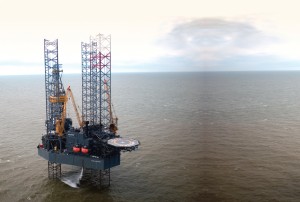
If you’ve compared – or are still comparing – the US Gulf of Mexico to the Dead Sea as a statement on the health of the GOM jackup market, Rowan Companies Inc may just have to beg to differ. As of late March 2010, the company had an 88% utilization rate on its eight rigs in the US Gulf and was enjoying an average dayrate of $145,000. “We’re very busy,” said David Russell, the company’s executive vice president of drilling operations.
The highlight for the company is McMoRan Exploration’s emerging ultra-deep gas plays, where Rowan’s jackups are drilling wells 30,000 ft deep and beyond in shallow water depths ranging from 20 ft to 100 ft. Wells can take from 200 days to a year and a half to drill.
If you’ve compared – or are still comparing – the US Gulf of Mexico to the Dead Sea as a statement on the health of the GOM jackup market, Rowan Companies Inc may just have to beg to differ. As of late March 2010, the company had an 88% utilization rate on its eight rigs in the US Gulf and was enjoying an average dayrate of $145,000. “We’re very busy,” said David Russell, the company’s executive vice president for drilling operations.
The highlight for the company is McMoRan Exploration’s emerging ultra-deep gas plays, where Rowan’s jackups are drilling wells 30,000 ft deep and beyond in shallow water depths ranging from 20 ft to 100 ft. Wells can take from 200 days to a year and a half to drill.
Under these well programs, even the “small” pipe program calls for running 16-in. intermediate casing, which “in any other well is very big pipe,” Mr Russell said. The large pipe program calls for 20-in. intermediate casing. “These are very big and deep wells, and they’re very challenging.”
To drill these kinds of wells, he continued, the rig must have a very heavy drill package – hookload capacity of 2 million or 2.5 million lbs and high horsepower mud pumps. “Just as important, you have to have all the braking systems to stop a 2 million- or 2.5 million-lb load safely and have redundancy in case there’s a failure in your braking system,” he said.

At the end of Q1 2010, worldwide utilization for all classes of jackups sat at around 75%. Mat-type rigs were hovering around the low 30% while the independent-leg cantilever jackups ranged from mid-70% to mid-80%, depending on depth capability. Contrast those numbers with 96% for high-spec jackups (those with at least a 2-million-lb hook load).
These numbers show that although there is an oversupply in the worldwide jackup fleet, the niche high-spec jackup market is not overbuilt, Mr Russell said. He pointed to the Rowan EXL I jackup under construction at AmFELS in Brownsville as an example. “That rig is already contracted, and it hasn’t come out of the shipyard,” he said.
McMoRan signed up the EXL I to drill in the Gulf of Mexico at least through mid-2011. “We will start with a ‘shakedown’ well, which McMoRan says is a shallow well – 19,000 ft. That’s a pretty deep well, but it’s our ‘shakedown’ well. Then we’ll move to one of their ultra-deep gas wells.”
Rowan has four newbuild jackups under construction that are currently uncontracted, but Mr Russell believes there’s a good chance they could follow in EXL I’s step and drill additional ultra-deep gas wells in the Gulf. He believes that more drilling opportunities could definitely open up if production from these wells live up to industry expectations.
“I think there will be a lag until you see a huge uptick in activity… These wells are very expensive, and some operators are stepping back and watching. They want to make sure the production is there,” he continued.
WORLDWIDE JACKUPS
Outside the US Gulf too, Mr Russell said, there’s a growing preference for modern newbuild jackups. “North Sea, Middle East, Asia – we’re seeing a highgrading of the jackup fleets. When older rigs come off (contracts), oil companies replace them with newer rigs. I think operators realize that they’ve pushed the capabilities of a lot of the rigs to their limits… they need larger derricks, larger deck space, larger pumps and mud pit capacity.”
In the Middle East, for example, Rowan has two rigs – the Gilbert Rowe and the Rowan-Paris – drilling for Maersk Oil. “The wells we’re drilling in Qatar for Maersk – we essentially drill until the top drive stalls. We’re running those rigs at 100%. We’re maxing them out.”
In this region, the company also has three jackups working for Saudi Aramco, and the Rowan-California is undergoing upgrades before commencing a contract with Wintershall in Qatar.
Three more jackups in the region are currently uncontracted after finishing life enhancement work in late March 2010.
The wells for both Saudi Aramco and Maersk are all difficult wells, Mr Russell said, although in different ways compared with the ultra-deep wells in the Gulf. “It’s a different environment. There’s lots of H2S, and they drill these wells horizontally whereas the Gulf of Mexico wells are vertical,” he explained.
He added that Rowan sees Southeast Asia as another growth area, even though the company actually has zero rigs there at the moment. “We see the same thing there we see in all the other areas – operators are upgrading their requirements for rigs,” he said. The company recently opened a new office in Kuala Lumpur, Malaysia.
There’s also high potential in Mexico, where the company has just one rig, the Rowan Gorilla IV, under contract to Pemex.

“Pemex has been very clear that they’d like to upgrade their fleet. Some of their tenders have a specification that the rig cannot be over 10 years old. They’ve also been vocal about wanting to go with the independent-leg jackups versus the mats. We’ll see if they hold to that, because they’ll have to pay a higher dayrate to attract newbuilds,” he said.
Worldwide, Mr Russell said, he’s seen an increase in tendering across most of the jackup segments. Notably, the North Sea, Middle East, as well as the Gulf of Mexico, have been the most active.
“We actually took a few contracts in the North Sea at a little bit lower rates. We’re trying to keep the term a little shorter because we feel like the rates and demand will be higher in the future. Long term we’re very bullish,” he said.
A FEW SNAGS
The picture painted so far may be quite rosy, but Mr Russell acknowledged that there certainly are underlying challenges in the jackup market.
First and foremost in the Gulf of Mexico, there’s the big headache of the annual hurricane season. Due to the relatively uneventful 2009 season, contractors had hoped that insurance premiums would pull back in 2010.
But actually, “rates have come down some but not much,” Mr Russell said. Especially on the older units, the insurance that contractors can get is so expensive that they’re essentially self-insuring a significant portion of the value of the rig, he continued.
Insurance is a global market, he pointed out, and rig-related incidents last year in other parts of the world impacted insurance rates for everyone. “Just because we don’t have damage here in the Gulf doesn’t mean other areas can’t impact our rates.”
There’s also the problem of too many jackups in the overall fleet. Twenty-five new jackups were delivered in 2009, and more than 60 additional units are scheduled to join the worldwide fleet over the next three years. Moreover, nearly 85% of those 60-plus rigs are still uncontracted.
Whether attrition will come by contractors scrapping older rigs has been a subject of wide speculation, though it’s far from certain to happen. “For some reason the old rigs keep popping up,” Mr Russell said. Engineers may say that the design life on a 50-ft cantilever is 20 to 25 years, but most rigs have certainly outlived that. “At some point, they’re just not going to work because it’s not cost-effective to upgrade them.”
On top of a rig oversupply, the GOM market has to deal with an even bigger oversupply – of natural gas. Prices have fallen sharply within the last couple of years, in large part due to the massive gas production in the onshore shale plays. Competition from these shales also continue to threaten traditional offshore gas plays, vying for operator interest and budgets.
“People are concerned about the amount of gas coming out of the shales even as natural gas prices have fallen. Plus, it’s probably faster for an operator to pick up a land rig and drill in the shale and have some pretty quick production,” Mr Russell said.
For Rowan, however, this trend is less of a true threat and perhaps more of a double-edged sword – because the company also owns 32 land rigs. “In 2010, a lot of our land rigs have gone back to work at very good rates. The nice thing about shale plays is they have a high depletion rate; the first year can range between 40% and 65%. To get production from the shales, we’ll have to drill. It should be good for our industry and our personnel,” he said.
NOT DEAD YET
Interestingly enough, when Mr Russell was promoted to his current position in 2005, a primary goal of the company was to geographically diversify its fleet by shifting focus outside the Gulf of Mexico, he recalled. They’ve certainly achieved that: At the end of 2009, only 35% of Rowan’s fleet were located in the US Gulf, compared with 92% at the end of 2003.
Yet, unintentionally, the Gulf of Mexico has once again become a hotspot for the company, thanks to new drilling opportunities that weren’t available just a few years ago.
The lesson? Better not write off the Gulf just yet.

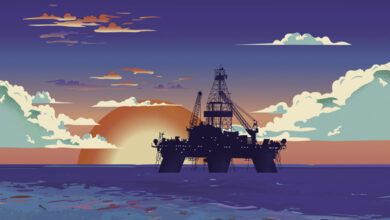
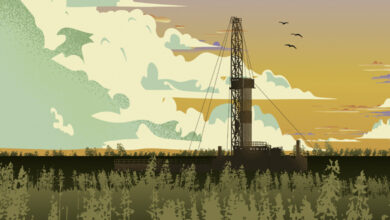
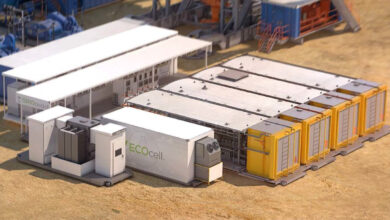
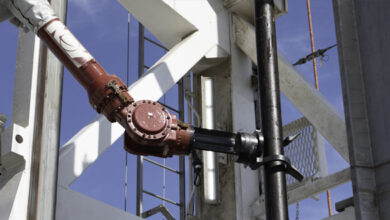
To whom it may concern,Am seeking employment as a roustabout,deck-hand,rigger/banksman,welder or mech assit am a very hard working individual looking for an jod with your company please contact me am willing to travel also am from trinidad and tobago thank u